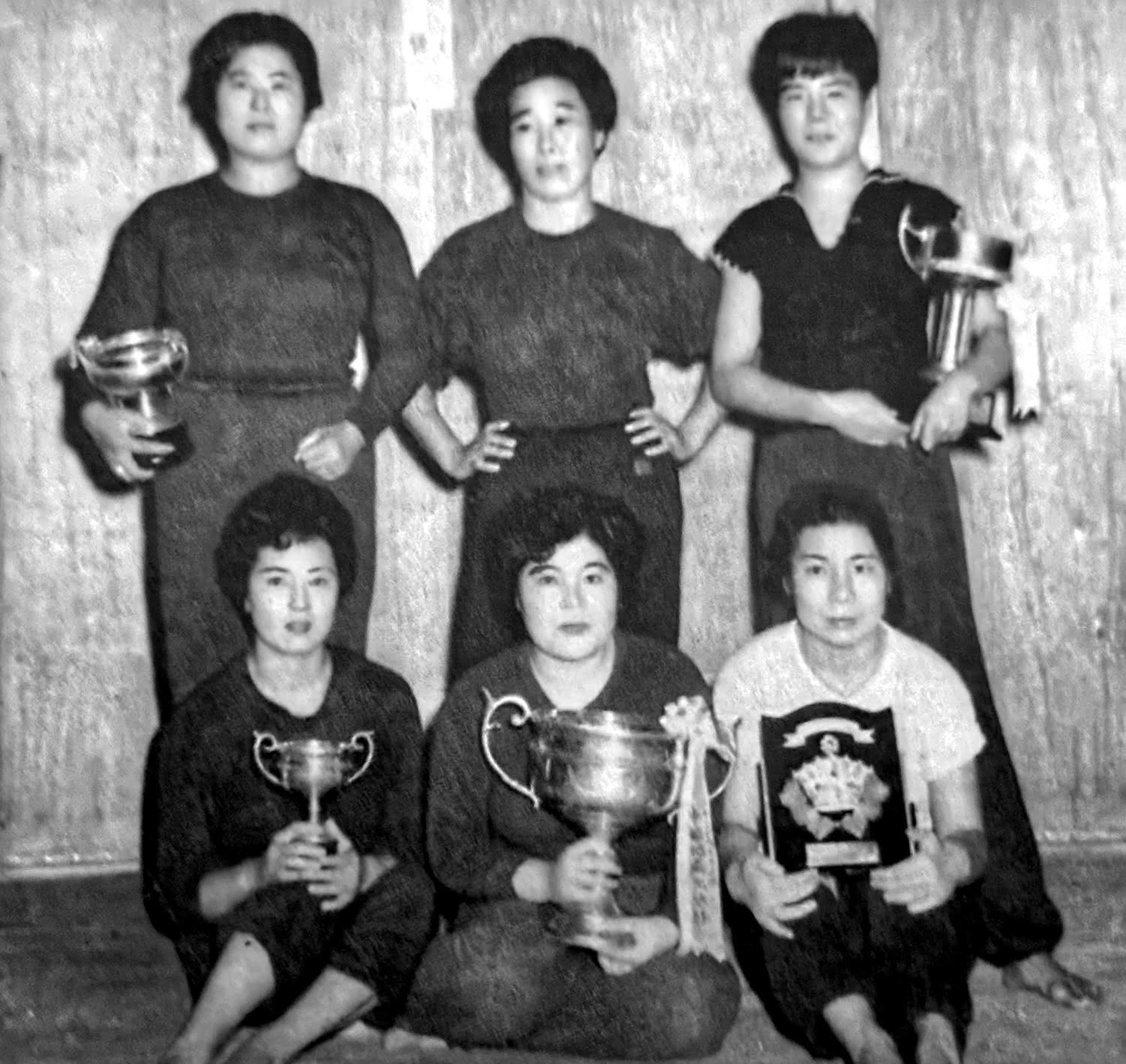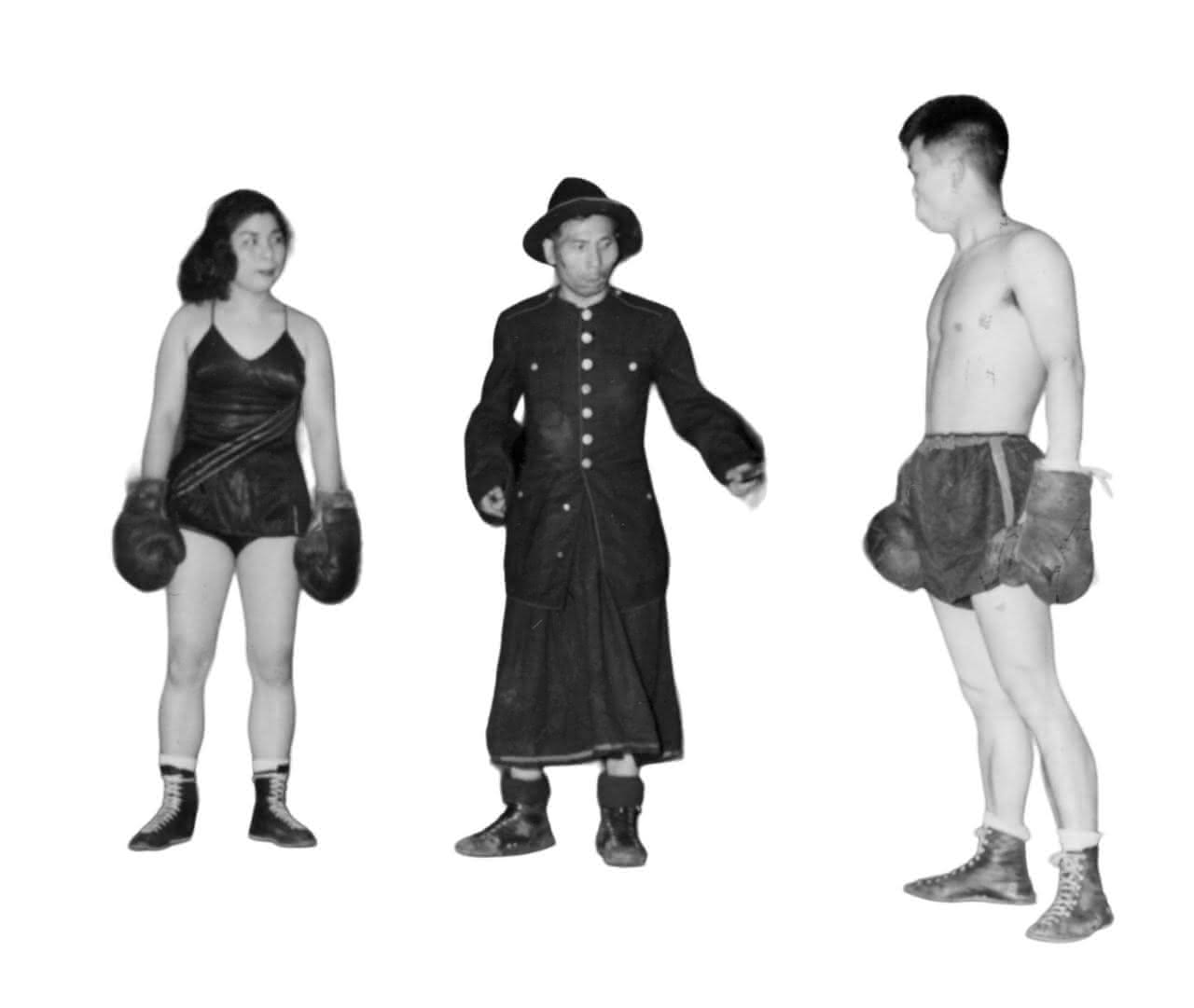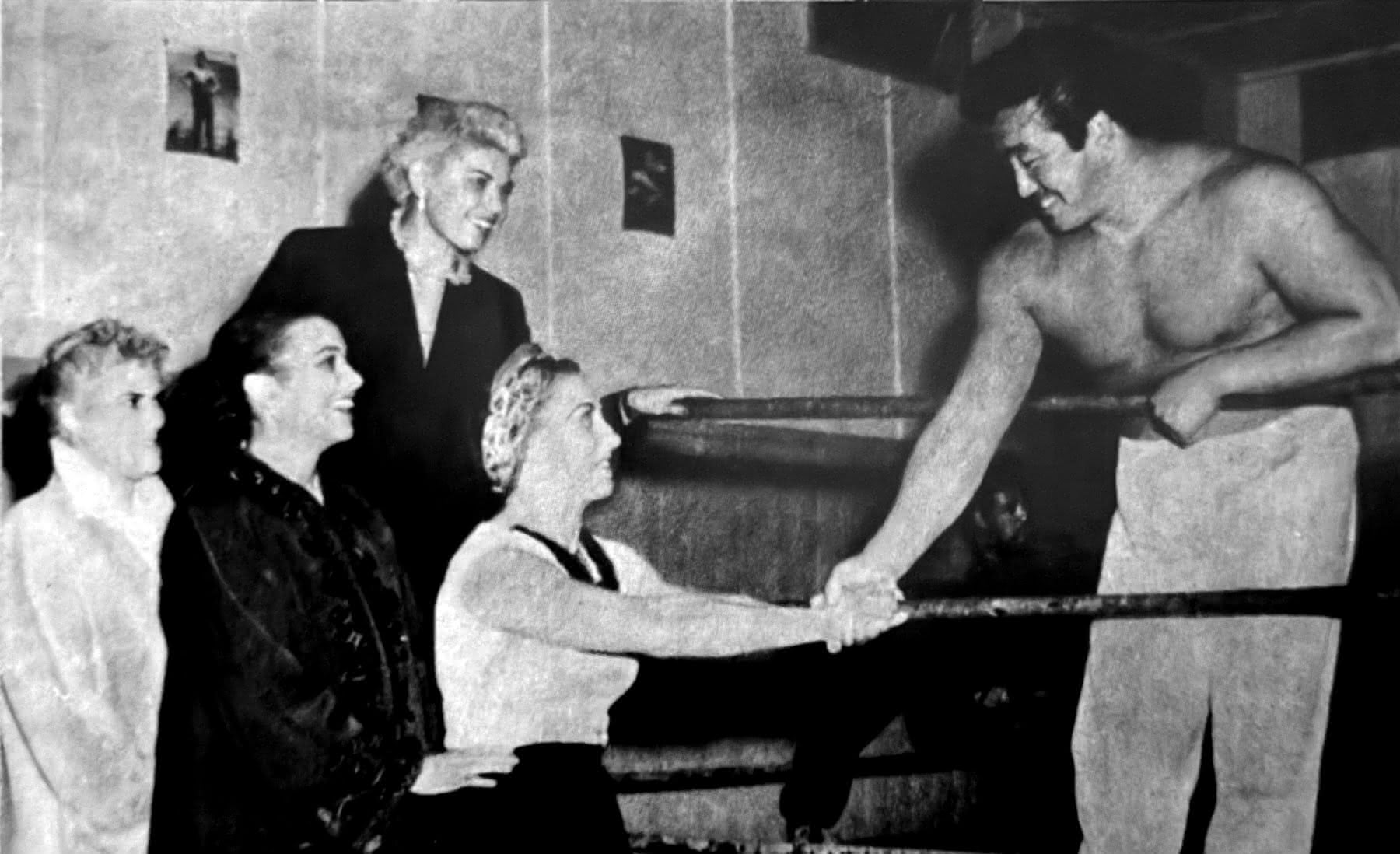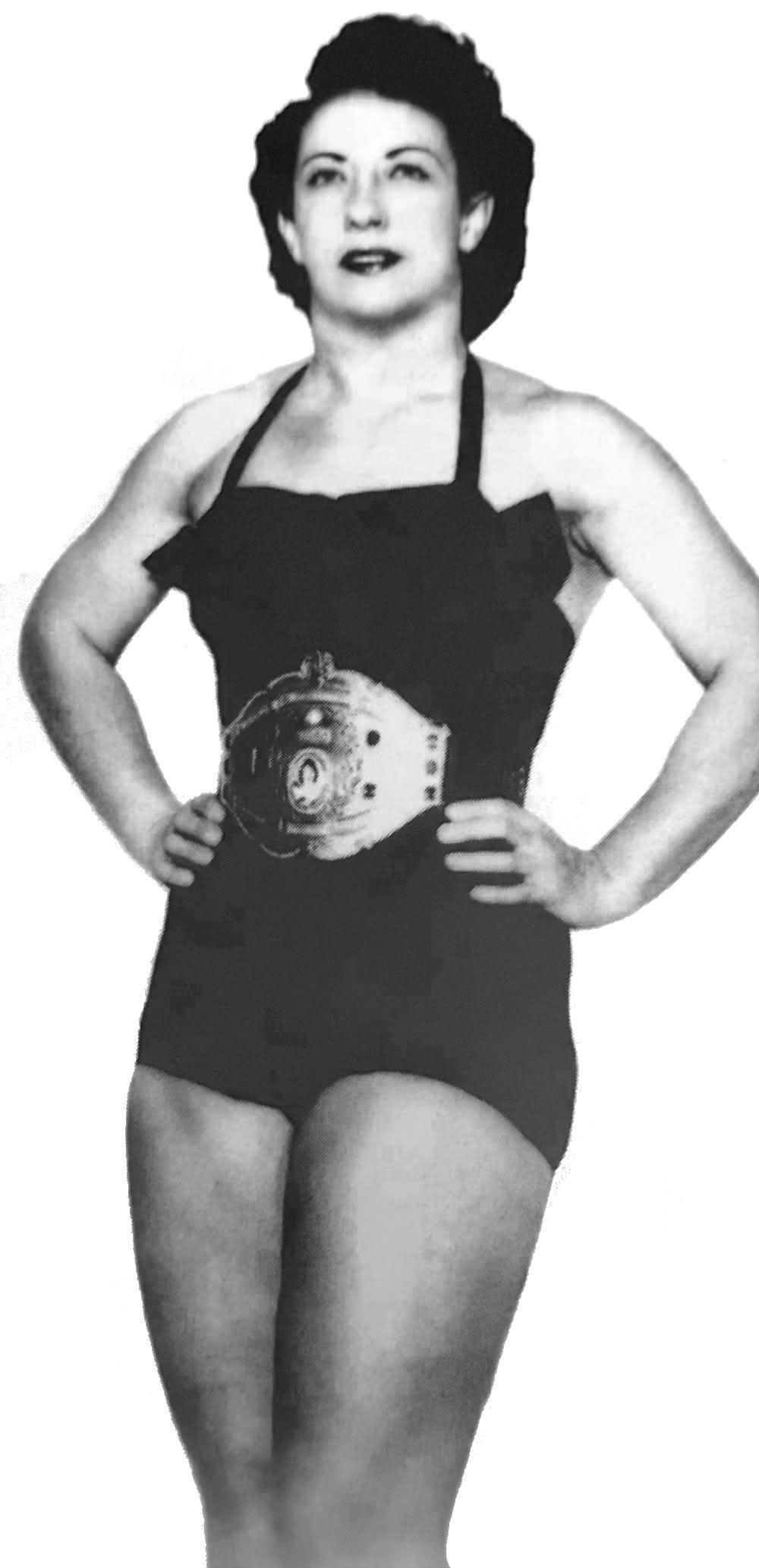
back to joshi propaganda project

All Japan Women's Pro-Wrestling (AJW), also known as Zenjo is considered by many to be the most important body of work of women's wrestling in the world. Although AJW was the first major promotion to have a lasting impact, it's important to explore the history of women's wrestling in Japan before AJW to gain a deeper cultural understanding of its place in Japan. While this early period is challenging to research due to sparse documentation and largely oral history, scholar Tomoko Seto's article "From the Stage to the Ring" provides valuable insights through translated primary sources and Japanese texts.
If you read Ms. Seto's article and then this one you'd probably think I entirely cribbed this from that one. The fact is that while the general history is pretty well established as similar everywhere, I must defer to her telling for accuracy when so many of the other writings are secondary, unsourced, or machine translated. I have deferred to both her name translations and additionally removed some poorly-sourced apocryphal information from a previous version of this zine. If you find this brief overview interesting, I highly recommend purchasing Ms. Seto's excellent article from Project Muse as I did; it's not expensive.

The story begins in 1948 with a trio of siblings: Seijiro (Pan), Sadako (Lily), and Noburu (Shopan) Igari. For three years, they performed at American military bases with the Pan Sports Show, featuring comic boxing matches followed by wrestling where Lily defeated Shopan. While the US occupation of Japan ended in 1952, the military circuit remained lucrative for entertainers as up to a quarter million soldiers remained in Japan until the late 1950s due to the Korean War. It was not clear that the siblings had any real knowledge of professional wrestling at this time although Pan had training in boxing, judo, and amateur wrestling so had an understanding of simulating real combat. Seto makes a parallel between the Pan Sports Show and the taishū engeki, a family-based itinerant theater movement in the 1920s in which families similarly travelled and worked together for long tours, training the younger children in various disciplines important to the troupe. The siblings were highly motivated to provide for their parents who like many of middle age struggled mightily in postwar Japan.
While Lily was well-treated by her family, the Igaris still ran in a sleazy and dangerous scene. Similar "flesh" (a euphemism for erotic) wrestling promotions existed in Tokyo strip clubs. In fact the Igaris even faced arrest in Tokyo in 1950 after performing at one of these clubs due to suspicion of violating obscenity guidelines. Despite the scandal, the Pan Sports Show actually was given a lot of good press due to the clever promotion of Pan and the legitimately impressive skills of Lily. By then, the Igaris had started to pursue a more focused vision of what women's wrestling could be untethered from its sketchy origins.
In 1950, the siblings added another woman to the team in Katsumi (aka Rose) Tayama. Rose, Lily, and two other girls toured in a revised group called the Pan Show. The show was a variety act capped with a "garter struggle match" that the girls developed inspired by Moulin Rouge strip shows. These were gimmick matches in 1950, before any Japanese men's pro wrestling was promoted! The girls were extremely serious about the wrestling part even if they had only minimal training and their fire impressed a GI by the name of Elmer Hawkins, an African American engineer who, unlike Pan, was well versed in American women's professional wrestling.
Hawkins established a gym with the Igaris that opened in 1953 and the show came over time to more closely resemble American women's wrestling. Lily left the base shows to train seriously at Waseda University in wrestling. In 1952, Pan founded the All Japan Women's Wrestling Club (WWC), the first serious attempt to promote women's wrestling as an attraction unto itself. Several more wrestlers joined up at this time but the most significant was Yukiko Tomoe, a convert from sumo.

In 1954, two massive cultural events then led to a short boom in joshi wrestling: the ubiquity of Rikidozan's JWA and the tour of the legendary American wrestler Mildred Burke. These two phenomena hit a cultural need for Japan at the time. In Rikidozan, Japan found a new masculine superman to overcome the postwar cucking despite his actual Korean origin. In Burke, they had a sort of avatar of the stereotypical empowered masculine-coded Western woman.
The JWA sprang to universal popularity on the backs of Rikidozan and Masahiko Kimura's match with Ben and Mike Sharpe and established most of the early tropes of Japanese pro wrestling. This match was even credited with popularizing television as a medium in Japan. The WWC girls trained with the judo legend Kimura for a time. Although Rikidozan was not supportive of women's wrestling at all, going so far as to deny participation to magazines who covered it, Sadako actually spoke highly of him and he did seem to admire the WWC girls' commitment to martial arts.
Later that year a tour was organized around the iconic American wrestler Mildred Burke who was blackballed from the US scene by her ex-husband, the human garbage pile Billy Wolfe. Wolfe held a monopoly on women's wrestling in the USA and when Burke, the largest draw in the sport finally grew exhausted with him and left, he prevented her from working in the States via a pressure campaign. The WWC girls opened for this tour with Burke, Mae Young, and others drawing crowds up to 13,000 spectators. They learned from the American stars with Sadako expressing particular admiration for Gloria Barattini's ring work.

By late 1955, many other women's wrestling organizations had started to spring up and organized under the banner of the All Japan Women's Pro-Wrestling Federation which included not only the WWC but other important companies like Tokyo Women's Professional Wrestling (TWPW). On September 11, the Federation ran a championship event at International Stadium in Tokyo that drew 8000 fans.
1955 and 1956 had good attendance but the fad quickly faded and by 1957 the Igari brothers had left the business. Sadako continued to work with WWC in a diminished state until the mid-1960s but the scene had largely retreated back to the strip clubs that birthed it. Like many Pioneers, Sadako did not see massive success financially, but continued to be a lifelong fan of wrestling and even cited Mitsuharu Misawa as her all-time favorite wrestler. Lily Igari, bonafide sicko. Put it in marble.
Although there is a sort of break in the history here, it's very important to note this scene was not isolated, there is a very clear through line between the work of WWC, TWPW, and other organizations and what came later with AJW. Many of AJW's early stars even got their start in this mid-50s scene. Some names that will come up later whose history began here include Yanagi Miyuki and Chiyo Obata. Wide ranging social changes were allowing some women to pursue lives unconsidered even in the early 1950s and these pioneers, especially the Igaris, laid the groundwork for everything to come.